Snorkelling is a fun way to explore the underwater world but if you’ve never snorkelled before, where do you start?
From what swimming skills you should have to getting the right equipment and choosing a good snorkelling spot , we run through a few tips to get you into snorkelling and enjoying the incredible life that lives beneath the waves.
Disclosure: Please Note That Some Links In This Post May Be Affiliate Links, And At No Additional Cost To You, We Earn A Small Commission If You Make A Purchase. Commissions Go Toward Maintaining The Snorkel Spots Website.
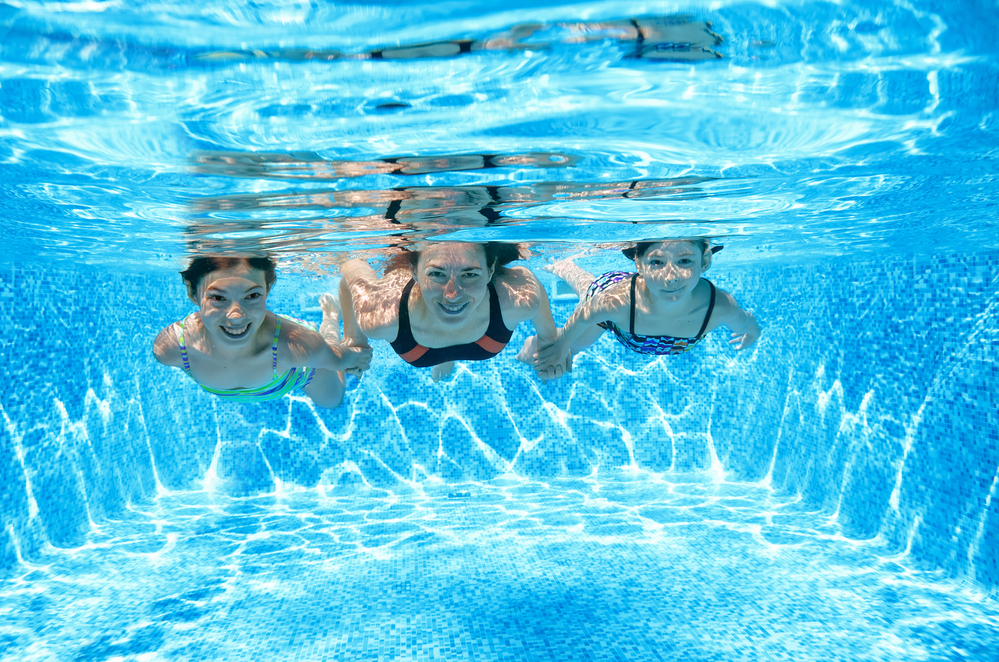
Learn to Float, Tread Water & Swim
You should have some basic swimming skills before you snorkel including being able to float and tread water. If you identify as a non or poor swimmer these skills are best learnt before starting to snorkel.
You should be able to float on your back and front. You should also be able to move yourself through the water by at least using your legs. You risk putting yourself in danger without these skills.
Safety equipment and flotation devices such as a lifejacket or pool noodle can be of assistance but they are no substitute for being able to float and move through the water.
If you don’t have these basic skills, we suggest going to a professional swimming teacher or qualified friend to develop your confidence. Many snorkel tour operators won’t let you go in the water if you can’t demonstrate these skills.
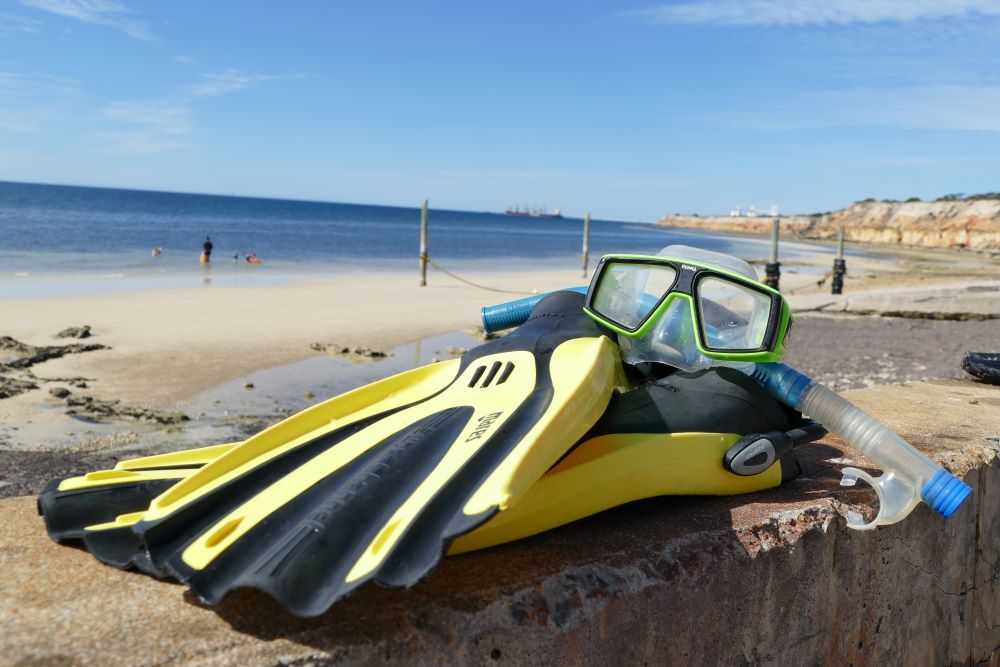
Choose the Right Gear
It is worth investing in quality snorkelling gear that fits well. Snorkelling gear is not one size fits all! If your facemask leaks or your fins are too tight you will have a horrible time. With comfortable gear, you can relax and enjoy the experience.
Try looking for gear at an outdoor shop or dive shop rather than buying a set of cheap gear. You want to be able to try on the mask and fins to check that they are comfortable.
- Invest in a tempered glass mask with a silicone seal that fits your face. A well-fitting mask should create a proper seal without leaking or discomfort and with care should last for years.
- Fins should be the right size and the snorkel should have a soft mouthpiece.
- You might also want a rash top or wetsuit to keep you sun safe or warm in the in the water.
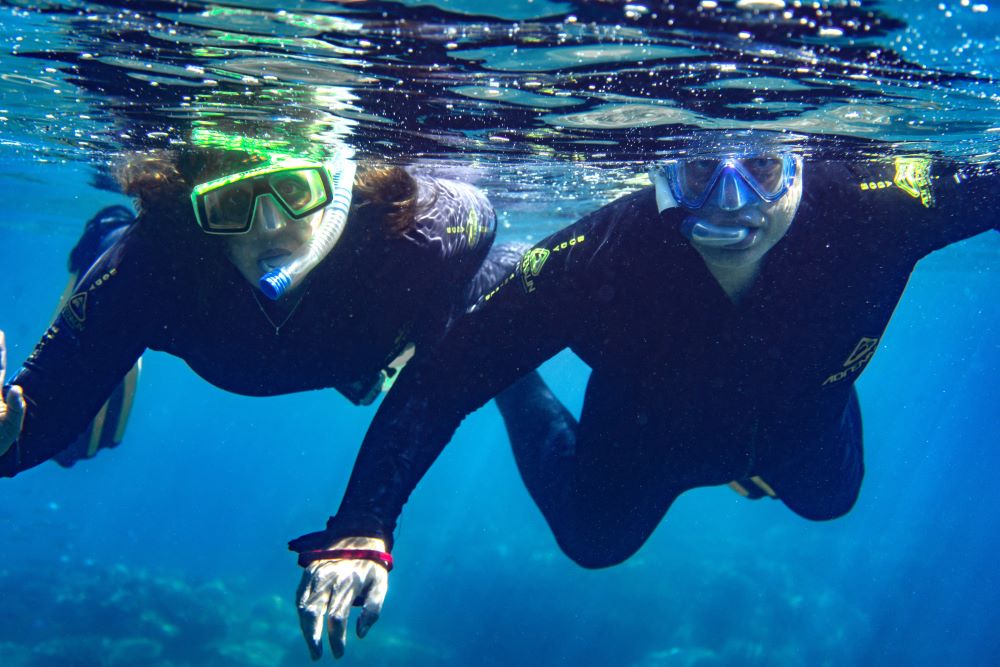
Practice Breathing Underwater
Something a lot of new snorkellers struggle with is using a snorkel so you should practise this before going into the open water.
Whether you practise in the bath or a swimming pool, get used to breathing slowly and steadily and having the snorkel in your mouth
When you can relax breathing through a snorkel, you will have a much more enjoyable time in the water.
Clearing the Snorkel
Once you have got used to using a snorkel, the next trick is to learn how to clear your snorkel if you get water in it.
It is not unusual to get a bit of water in your snorkel, and you will certainly get water in your snorkel if you dive underwater, so you need to learn how to forcefully blow the water out.
If this is something you have trouble with, there are some snorkels with a lid at the top that stop the water coming in (but still let you breath!).
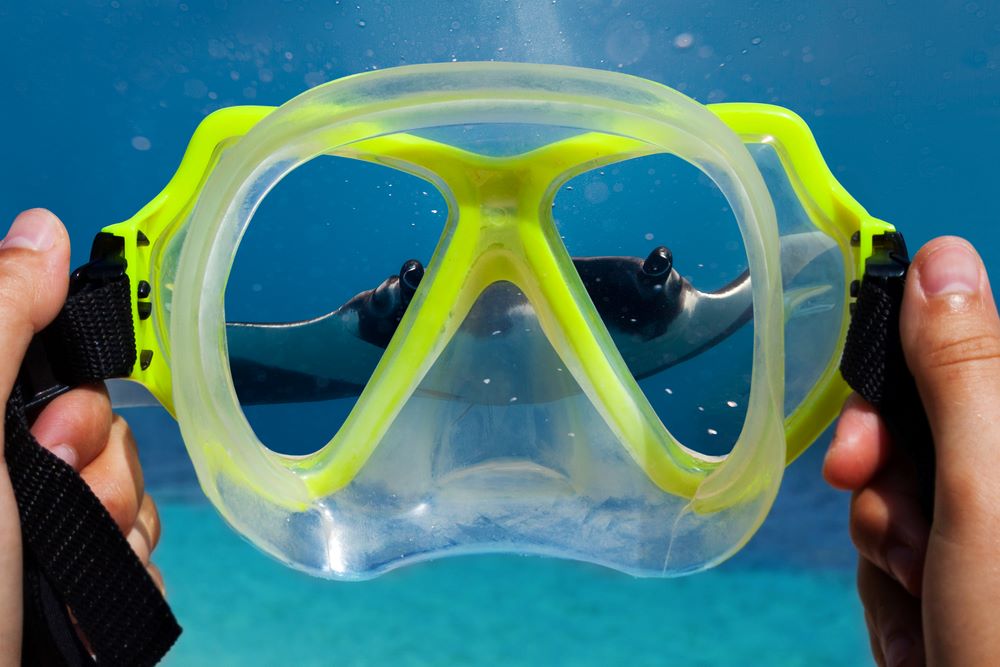
Master the Mask
With your breathing under control, let’s look at your mask. If you have selected one that suits your face, it should fit snugly but not be too tight. Without the strap on your head, it should stay in place if you breathe in through your nose.
You also need to prepare a new mask to stay un-fogged. Read how to do that here. You should also get some anti fog solution to keep your mask clear when you are snorkelling.
Learn how to clear water from your mask. While you are getting used to your snorkel, you can also practise clearing your facemask by tilting your head back and exhaling through your nose.
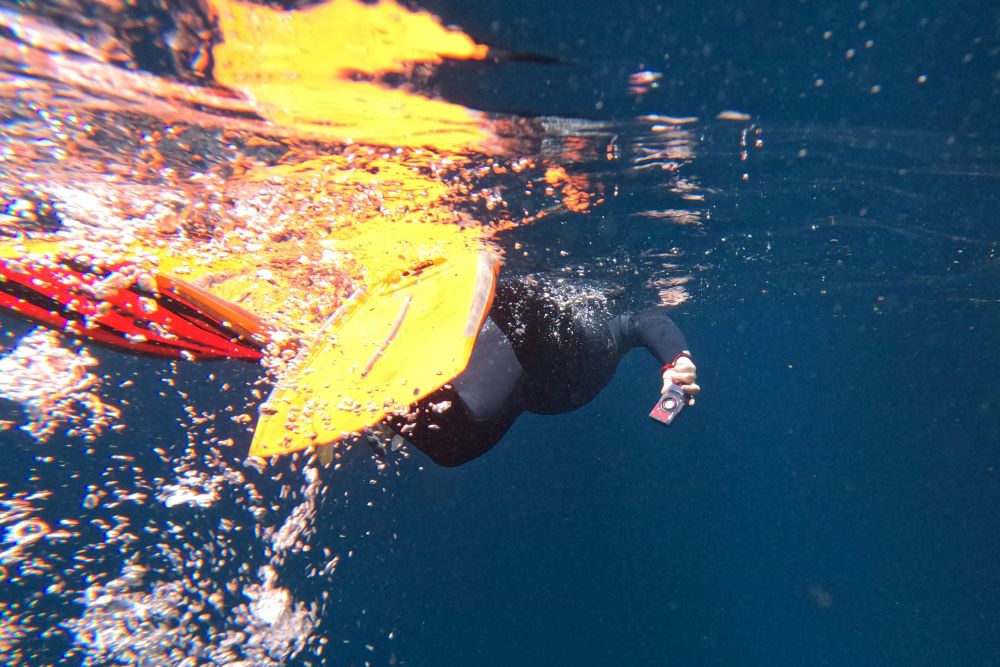
Learn to Kick with Fins
If you have never done much swimming you will have to get used to kicking with fins. This is something you can practise in a swimming pool. It is an important skill to master as using your fins helps you see more and allows you to swim against currents and tides.
Most new fin wearers bend their knees too much when they try to kick. Aim to keep your legs loose but quite straight and keep your kicks slow and steady.
Dress for the Conditions
Whether it is sun protection or staying warm, make sure you dress for the conditions. This might mean wearing a rash top, bandana and reef safe sun block for a warm location or a wetsuit in cooler water.
Read more about the differences and advantages of wetsuits vs stinger suits.
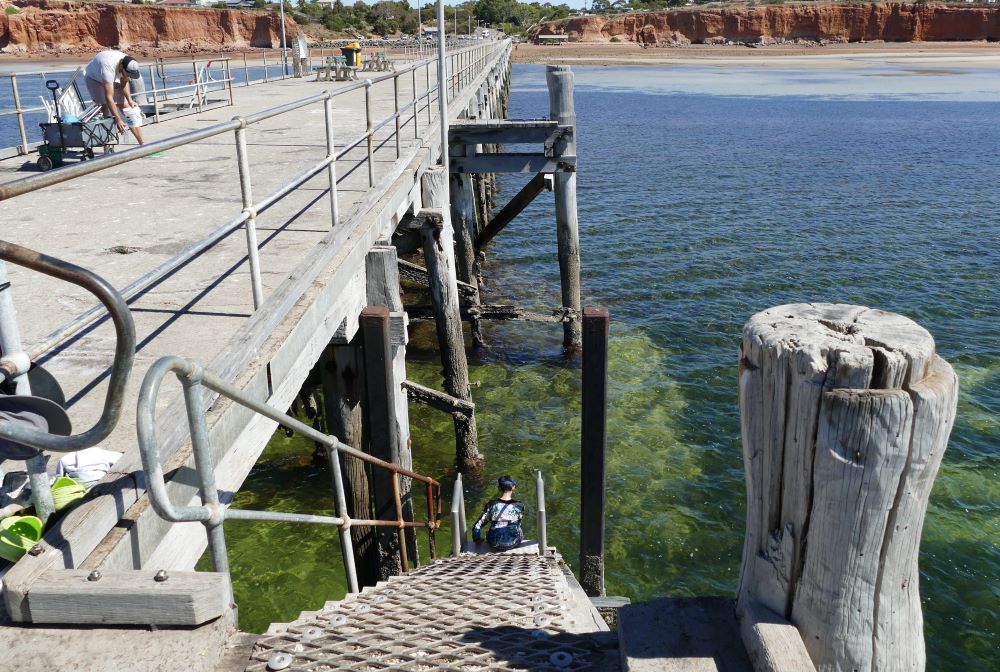
Entry & Exiting the Water
Have a plan for getting into and out of the water. This will vary depending on where you are snorkelling. For beginners, snorkelling off a beach or steps at a jetty is a good place to start.
Always have your mask and snorkel on before you enter the water. You also want to avoid walking on land in your fins. These are best put on at the water’s edge.
When it is time to leave the water, plan for your exit route to be free of coral, slippery rocks or waves. Keep an eye on your fins as you remove them so the first one is not swept away as you remove the second one!
Snorkel with a Buddy
Whether you are a new or experienced snorkeller, you should snorkel with a buddy. Not only is it more fun to share the experience with someone, but it is the best way to stay safe.
Have a snorkel plan, keep an eye on each other and you can let each other know how you are going. You can also be close by when one of you spots something fantastic underwater.
Understand Water Conditions
Research your snorkel spot. Understand when the best time is for snorkelling there and when to avoid it. Tides, wind conditions, and currents all need to be taken into consideration.
Keep an eye on weather forecasts, regional Facebook groups or check at local visitor centres for information (and of course check here for details about a snorkel spot!).
Weather apps like Willy Weather, BOM Weather, Windy and Wind Finder are all excellent resources for learning about weather conditions.
Choose the Right Location
If you are a new or inexperienced snorkeller, choose a snorkelling spot with calm waters and minimal currents where it is easy to get back to land.
Avoid locations with deeper water and currents until your confidence improves.
Snorkelling below jetties can be good for beginners. While you need to watch for fishing lines, they are usually easy to access and can have lots of marine life. Find more information on choosing the best snorkel locations.
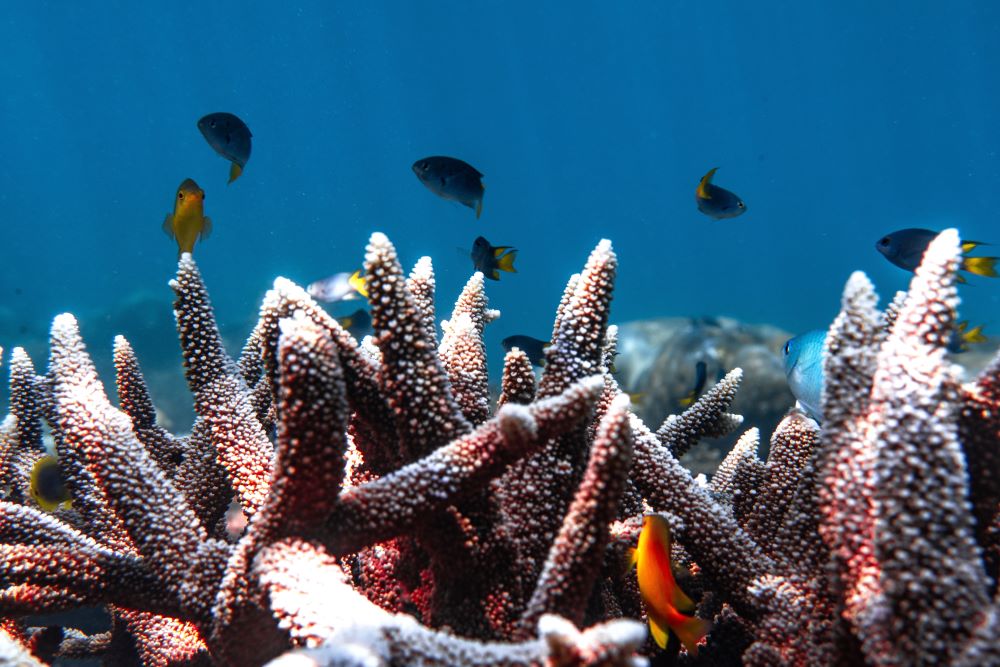
Be Mindful of Marine Life and the Environment
Snorkelling is a look, but don’t touch activity. Always respect the underwater environment and avoid touching or disturbing marine life. Not only will you avoid potential bites and stings, but you will also see creatures behave more naturally.
Also be careful around coral that you don’t touch it with your fins or stand on it as you enter or exit the water.
Read more about dangerous marine creatures in Australia.
Relax & Have Fun
If you have the right gear and feel comfortable in the water, remember to relax! The more you relax the more energy you conserve and the longer you can stay in the water.
Just take it easy, be patient and see what you can see. The calmer you are in the water, the more often fish and other creatures will get closer to you. If you are relaxed you are also more likely to be more aware of the marine life around you.
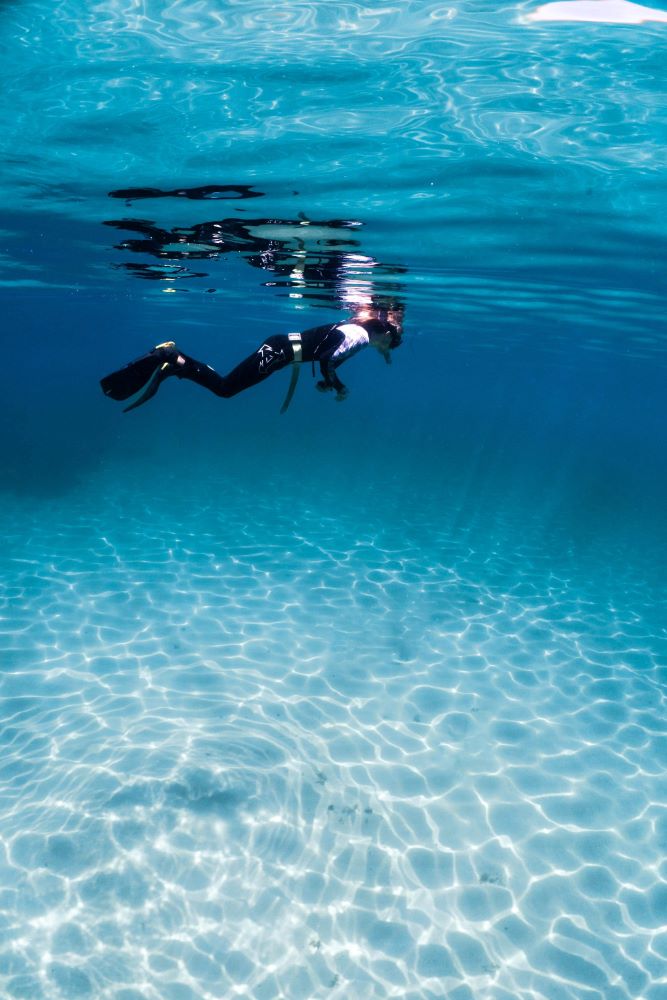

Learn to Duck Dive
As your confidence builds you can try duck diving. This is where you take a big breath and hold it as you swim underwater. You will need to learn how to equalise your ears clear your snorkel when you come back up.
Duck diving is a great way to not only get closer to marine life but also see what lives in little over hangs and between rocks. It is a great way to feel even more immersed in the underwater world.
Explore Different Locations
Your snorkelling skills will not only improve with practise but also as you explore different locations. From beaches to jetties and reefs, they all offer unique snorkelling adventures that will help develop your snorkelling skill and experience.
As you snorkel in different locations you will also see a wider variety of marine life and landscapes which keeps snorkelling exciting.
- Fun Facts about Sharks - February 15, 2024
- Where can you Safely Swim with Sharks in Australia? - February 15, 2024
- How to Snorkel – 15 Tips for Beginners - February 15, 2024

